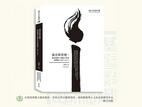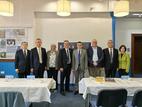In Xiamen, a city in southeastern China, there is a beautiful island called Gulangyu. It is known as the island of pianos because it has the highest proportion of pianos per capita, and because several pianists like Yin Chengzong and Xu Feiping were born there.
The introduction of the piano to China, which is the king of Western musical instruments, can be dated back to the Ming Dynasty during the reign of Emperor Wanli (1573-1620 BC). It was the Italian Jesuit Matteo Ricci who brought the piano (not a modern piano but a clavichord) to China. When he came to China to preach the gospel, he emphasized the integration of Christian faith with traditional Chinese culture, and thus won the favor of many scholar-bureaucrats, promoting both evangelism and exchange between Chinese and Western cultures.
Matteo Ricci found that Chinese literati were quite fond of music, just like Europeans. He wrote in his letter: "As long as there was a chance, they would visit each other and arrange feasts, singers and various musical instruments. They listened to the music carefully and were good at playing, and even recorded information on how music was played, the way and time in which it was played, and the accompaniment of dancing and singing."
Learning music was compulsory for church priests because they needed to be able to lead music when they held mass. Matteo Ricci was musically literate and commented on the similarities and differences between Chinese and Western music: "They had a wide variety of musical instruments, but there was no plucked harpsichord or percussion harpsichord. Their strings were made of raw silk. And it seemed that they didn’t know to use strings made from the intestines of animals. Their musical instruments could play the same harmony as ours, but their music did not differentiate between bass or treble. So they were not able to have the same harmony. But they enjoyed themselves and thought that there was no other music in the world. Although they have never seen our instruments before, they still showed surprise."
So Matteo Ricci came up with the idea of introducing Western instruments and music to the Chinese. In 1600, Ricci finally came to Beijing, realizing a dream of many years. In addition to giving a Bible and a bell to the Wanli Emperor, he also gave him a xylophone. A record in the "Xu Weng Xian Tong Kao" of the Qing Dynasty said: "In the 28th year of the Ming Wanli period, the Westerner Matteo Ricci came to share a Western musical instrument. The piano was three feet in length and five feet in width, and it had seventy-two chords. It was made of gold, silver, or iron, and each string had a column whose ends were on the outside. It could make sounds when the ends were struck." According to later studies, this piano was a "clavichord", which originated in the late 15th century in Italy, and later spread to other European countries. The piano was light and elegant and belonged to a real stringed instrument. The clavichord that Matteo Ricci dedicated to Zhu Yijun (Emperor Wanli) was one of the best in the world at that time, and this was also the first time for Chinese to see a piano.
Emperor Wanli was very surprised when he saw the piano, but he didn't know how to play it. So he asked the court musician to find Matteo Ricci. According to Matteo Ricci: "The emperor found the piano strange because the musician asked me: ‘He would like to hear the music from your own country.’ Then I replied: ‘I didn’t learn much of the music in my own country, except some songs that are to be sung at mass. I would translate it into Chinese to show you, but the tune would not the same as what you are familiar with.’”
In response, Matteo Ricci wrote, "The Meaning of Western Piano Music" based on his knowledge of Western music, which was the earliest piano sheet music in China. The songs were basically translated from Catholic mass songs and Italian lyrical poems, and used the language rhythm of Chinese poetry, blended with a melody of Italian songs. It contained not only the content of the Christian faith but also the author's thinking about life. It was a combination of Chinese and Western music work that had a high artistic value.
In modern times Western music has entered China and become an important part of modern Chinese culture. And Matteo Ricci, as the first person to introduce the piano and Western music to China, left behind a charming story about the exchange of Chinese and Western civilization.
- Translated by Elaina Wu












